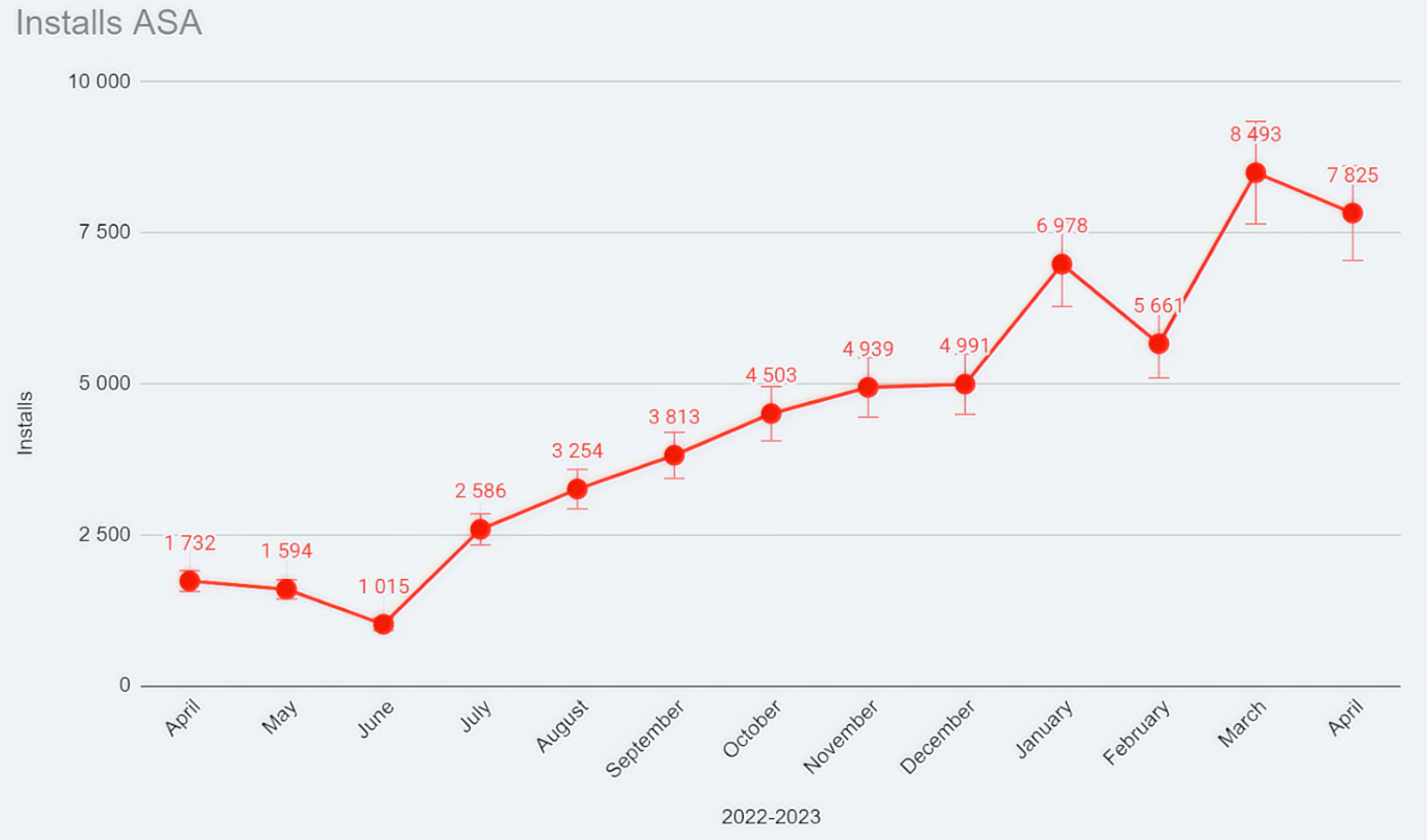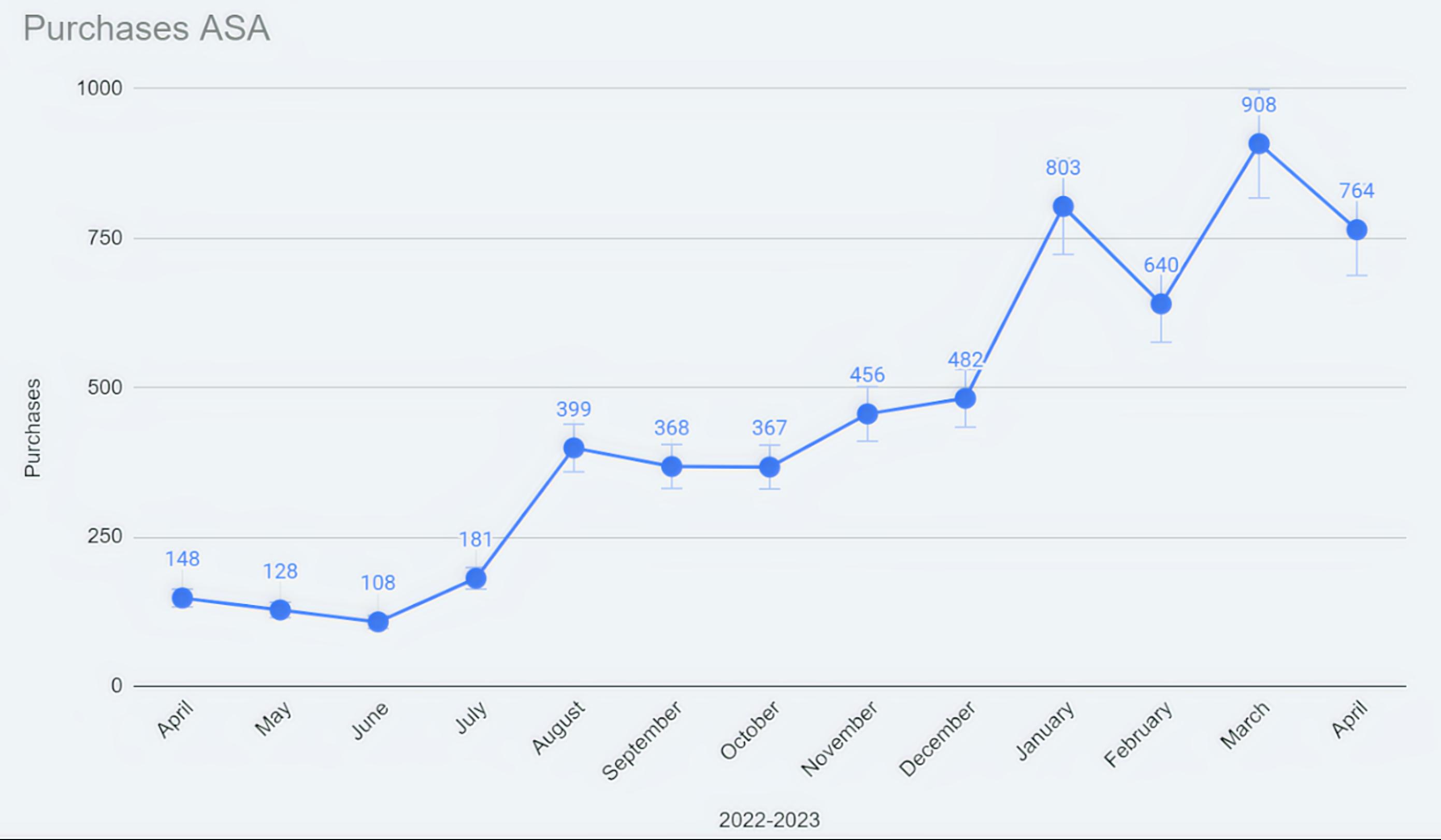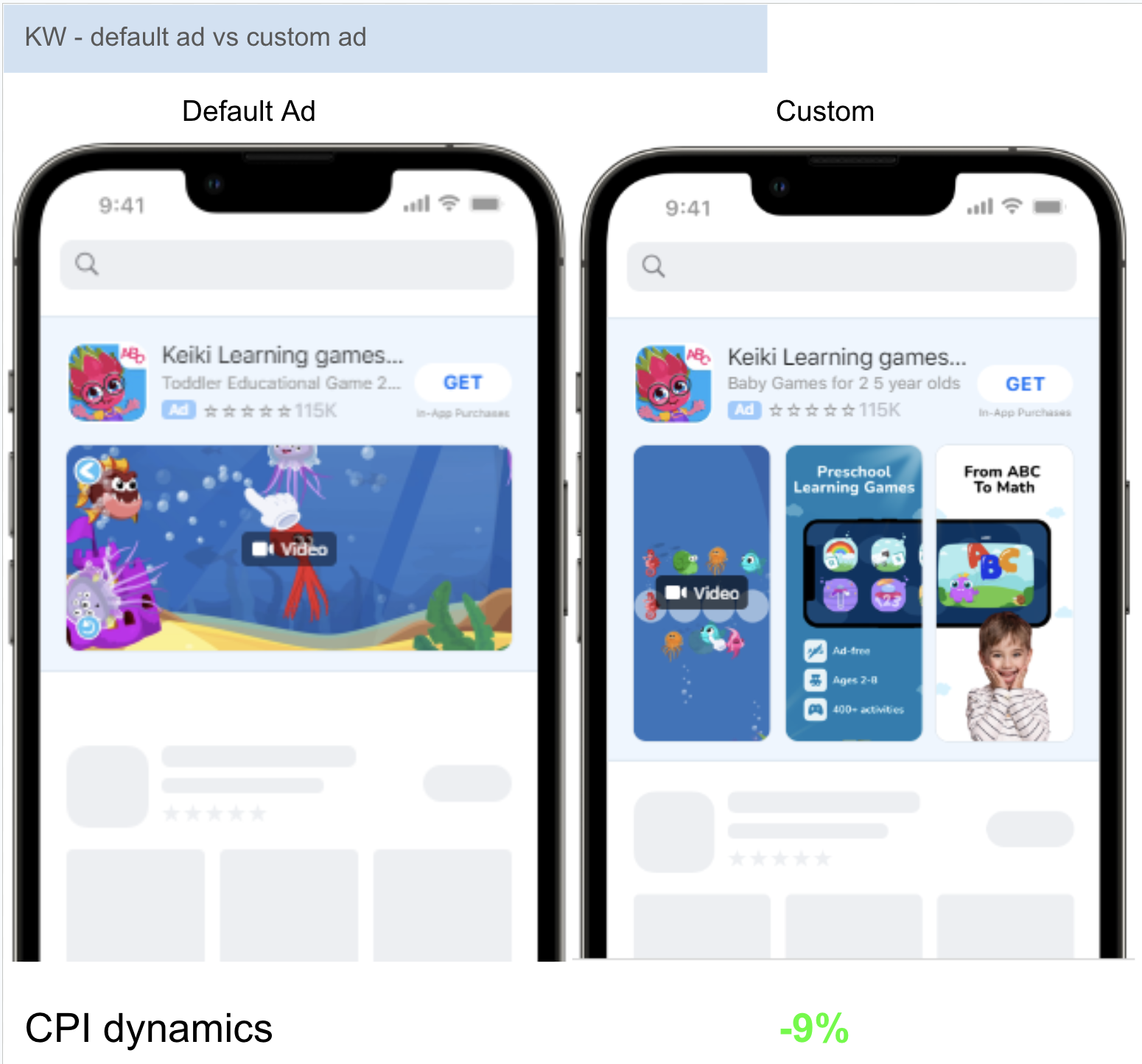App Store optimization (ASO) and Apple Search Ads (ASA) are potent tools for promoting apps that can significantly boost conversion rates. Every prospective user encounters an app’s page in the App Store, influencing their decision to download or purchase.
This article will particularly interest those working with mobile applications and seeking new traffic sources. I’ll share my experience with optimizing products in the App Store and provide some insights to help you quickly elevate your metrics.
ASO/ASA promotion is driving downloads and purchases
Over the past year, I’ve been working on the App Store optimization of our flagship product, an educational app for children named Keiki World. With ASO/ASA promotion, our metrics have grown substantially: The overall number of downloads increased by 210%, and purchases surged by 157%.

Dynamics of Keiki World purchases over the year (April 2022 – April 2023)Image Credits: Keiki

Dynamics of Keiki World installs over the year (April 2022 – April 2023). Image Credits: Keiki
Looking specifically at the traffic from Apple Search Ads, the changes become even more noticeable: Downloads skyrocketed by 352%, and purchases surged by an impressive 416%.

Image Credits: Keiki

Dynamics of downloads and purchases from Apple Search Ads over the year (April 2022 – April 2023). Image Credits: Keiki
These results are significant; the final step should be their evaluation. It’s crucial to consider the return on investment from ASA in addition to the growth metrics. However, correctly assessing the effectiveness of App Store tools requires setting clear goals.
It is essential to define specific expectations rather than simply aiming to “increase app purchases.” Our team focused on two main objectives:
- Optimizing the app’s page to increase organic downloads.
- Running advertising campaigns with Apple Search Ads while maintaining profitability and scaling this traffic source.
Step-by-step ASO implementation
Our marketing team had prior experience with ASO, so we continued conducting regular optimizations via iterative improvements. Enhancing the product page is crucial for increasing its visibility and attractiveness, making it easier for users to find the app and boost their desire to download it.
This process divides into two stages:
- Textual optimization of the page.
- Visual optimization of the page.
The textual part boosts the app’s ranking in the store’s search results. The app’s name and subtitle must represent the product accurately and concisely and convey all the necessary information to users. The app’s description should include a wide range of appropriate keywords, as their quantity and relevance influence the page’s visibility.
Visual optimization, on the other hand, increases the number of clicks and downloads. The icon is the first information users see about the app; it forms the initial impression. In-app screens on the page depict the product’s gameplay and content, showcasing its features.
The textual and visual optimizations were conducted in parallel by the team. For example — A/B testing of the Keiki World icon. We divided part of our page visitors into two cohorts, and each saw a different image. The option that generates more conversions starts representing the app for all future users.
A/B testing of the Keiki World app icon.
Our app is available in 140+ countries. Optimizing the app’s page in the App Store for each country requires significant effort, which can be impractical. Furthermore, the effectiveness of ASO depends on the overall marketing activity of the country, so it’s essential to consider the amount of local paid traffic. As a priority, the team chose the United States.
Working with the U.S. has unique challenges — at least 10 locales to handle, and our team optimized almost all of them. These locale-specific optimizations differ from those used in other countries, containing many keywords that perform specifically well in the United States.
The images below illustrate the differences in the app’s name and description between locales, but we selected them based on data from the U.S. The goal is to capture as many relevant and high-frequency keywords as possible. The visual component, however, remains consistent for both locales.

Image Credits: Keiki

Image Credits: Keiki
Optimized locales for the United States in App Store Connect.
Page optimization is crucial when starting with Apple Search Ads. It makes the product more appealing, leading users to click on the ads more frequently, thus reducing the acquisition cost.
The first step in working with ASA is selecting the right keywords. They should match users’ search queries, be relevant to the app’s niche, and be frequently searched. We categorized the obtained keyword list into three types of ad campaigns for convenience:
- Brand keyword campaigns.
- General keyword campaigns.
- Competitor keyword campaigns.
The competitor keyword campaign proved costly, so we discontinued it almost immediately.
The next step was scaling the campaigns. Among the two active campaigns, we chose the general one to increase volume, as the brand was yet to be widely known, and traffic from it was limited. However, the brand campaign served as a protective measure, guarding the app against competitors who advertised using our keywords.
Scaling the ad campaigns was aimed at achieving lower costs per download and purchase. For this purpose, we utilized custom product pages created in App Store Connect.
You can tailor custom product pages in ASA individually. Those pages can be used in advertising campaigns instead of the main product page, allowing us to change screenshots, add videos, and use unique promotional text while keeping other elements unchanged.
Below is the result of our custom product page’s work. It reduced the cost per download from ASA while maintaining competitive rates on the advertising auction:

Custom product page with reduced cost per download and main product page. Image Credits: Keiki
What else influenced the results?
Working with ASO/ASA is a multifaceted process, and I’d like to share a few valuable tips in conclusion.
- The entire team’s effort impacts the results. The quality of the product and its promotion are crucial factors directly affecting the success of ASO/ASA strategies.
- Prioritize the user. The product should resonate with them and fulfill their needs. Improving app metrics with ASO/ASA is challenging if the app lacks user value.
Additionally, there are a few other essential points to consider:
- Absence of ads. Users often prefer ad-free apps, as they inspire more trust and encourage repeat usage.
- LTV (lifetime value) optimization. The LTV of users affects the conversion rate from trial periods to recurring subscriptions. This allows you to increase ad rates and win auctions, resulting in higher ad visibility.
- Traffic acquisition. More traffic leads to a higher app position in the App Store. Potential users will see the app more often, ultimately impacting organic downloads and purchases.
Our experience with App Store optimization is successful. Every mistake made by the team turned into valuable insights that helped us plan future steps.
Each negative test indicates aspects that users do not like and sets the direction for further improvement. Therefore, embrace working with ASO/ASA, and don’t be afraid of mistakes — the results will impress you.
